It’s difficult to unplug these days. PCs, tablets and smartphones (even various appliances) can connect to the Internet wirelessly at the push of a button. Emails, notifications, and status updates are summed up by the device at any time of the day, making it difficult to focus. Android smartphones are no exception, but there are several ways to reduce the hassle.
1. Disable Bloatware Apps
Whether your phone is manufactured by Samsung, Google, or OnePlus, it’s probably preloaded with unwanted apps. This bloatware is provided thanks to your mobile phone manufacturer, carrier, Google, and even an independent license agreement. Ultimately, these apps (many of which you never use) consume phone space and resources.
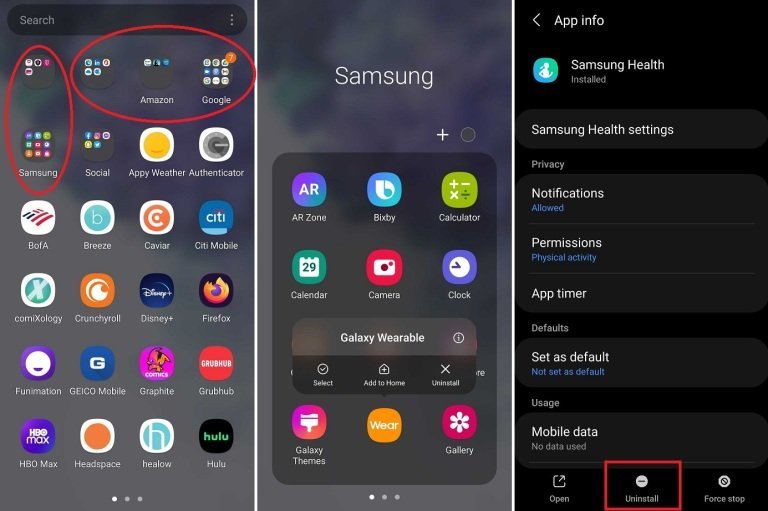
Brotoware is not unique to mobile devices, but it is the most insidious on the phone due to limited computing resources. Samsung devices may come with some Amazon, Facebook, Google, or Microsoft apps pre-installed before reaching your company’s own app suite.
Remove unwanted apps and press and hold the app icon to see the disable options and free up background resources on your phone. Alternatively, access the individual app options under Apps in the settings menu.
2. Disable Auto Brightness
Have you ever noticed that the screen suddenly goes dark or bright? This is automatic brightness, also known as adaptive brightness on some devices. It’s useful in theory, but for some people it can be over-compensated or suddenly change. If it’s too annoying, turn it off in your phone’s display settings or in your phone’s pull-down shade. Then manually move the slider to the desired brightness. Blue light filters, on the other hand, also help improve sleep.
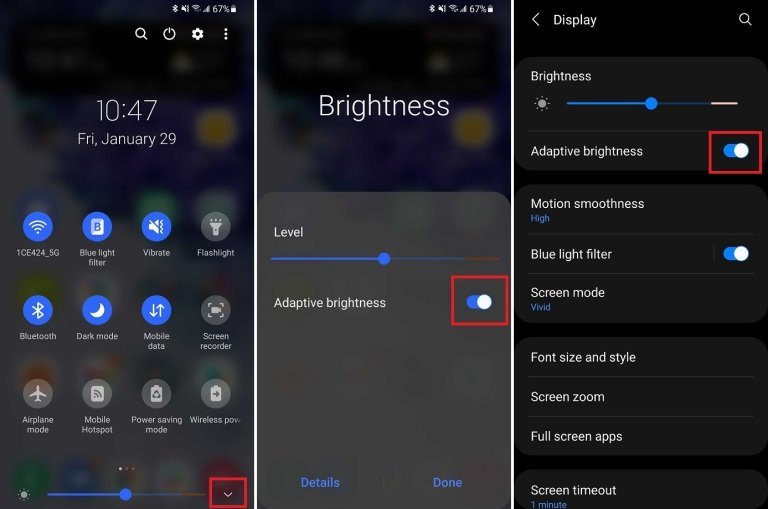
3. Enable Dark Mode
How many people look back in the morning, pick up their cell phone, close one eye and scroll through the notifications to block the glare on the screen? You can get some peace of mind by enabling Dark Mode, which is a theme option for the entire OS since Android 10. You should be able to enable it from the Display Settings or Quick Settings menu. Set it to stay on all the time or to toggle it on and off at specific times. If you don’t need system-wide dark mode, enable it in a specific app.
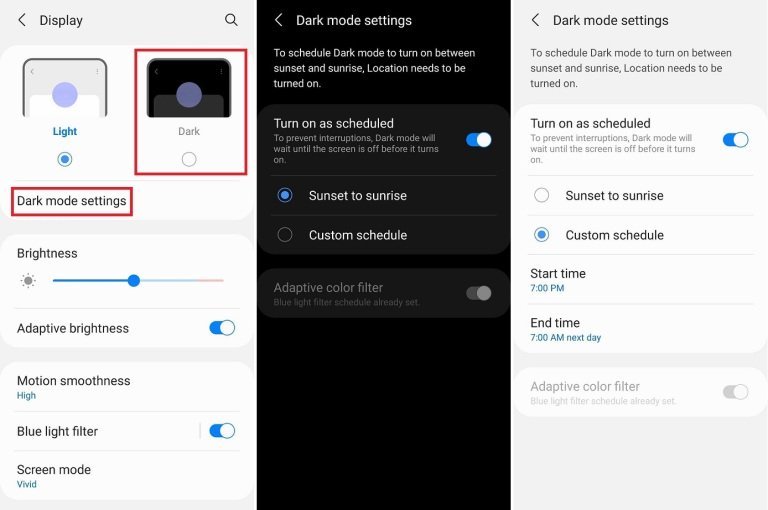
4. Enable Do Not Disturb
Depending on your notification settings, your phone will ping you when someone comments on your latest Instagram post, likes your tweet, Depending on your notification settings, if someone comments on your latest Instagram post, appreciates your tweet, or sends you an email, your phone will ping you even at 3am. do not disturb. This feature is under Sound or Notifications. When on, mute all incoming calls and notifications immediately or schedule them to be active at a specific time or day of the week. If you’re worried about an emergency, you can allow certain contacts or apps to break through silent mode.
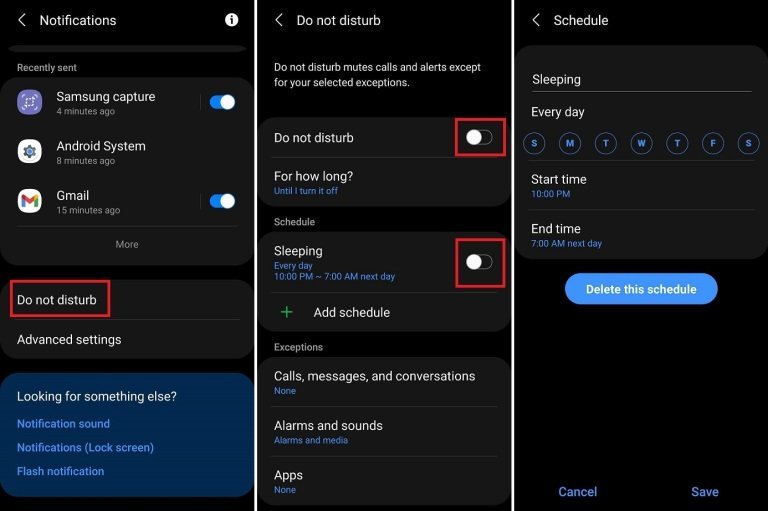
5. Manage Your Notifications
If your social media or game alerts are getting too aggressive altogether, shut them off by going into the notifications settings and viewing a life your social media or game notifications are getting too aggressive overall, go to Notification Settings to see a list of apps you can turn off and turn them off. You can further refine it by tapping the app’s name to turn off display and audible notifications. For some apps, you can turn off warnings for certain in-app features and leave others on. For example, on Facebook, you can turn off tag, comment, and reminder notifications individually.
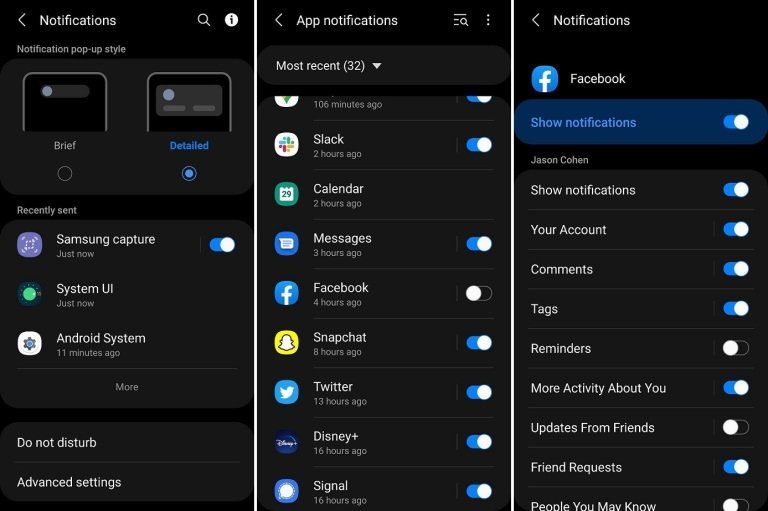
Notifications can also be edited directly from the pull-down window. If you see annoying notifications on your screen, press and hold to turn off that type of alert or go directly to your app’s settings.
6. Arrange Quick Settings Buttons
One of the best features on an Android phone is the pulldown shade. Just slide your finger down from the top of the screen, then pull down the top lineup of settings for easy access to WiFi, Bluetooth, Location, Airplane mode, and more. Some of these settings will be more useful than others, though. Perhaps you don`t really use things like WiFi calling or NFC, but like having the ability to set your phone to vibrate, toggle Location on/off, or access the flashlight with a single tap. Push unused settings to a second page or remove them completely. Everything you place on the top line of the quick settings menu can be accessed from the notification bar.
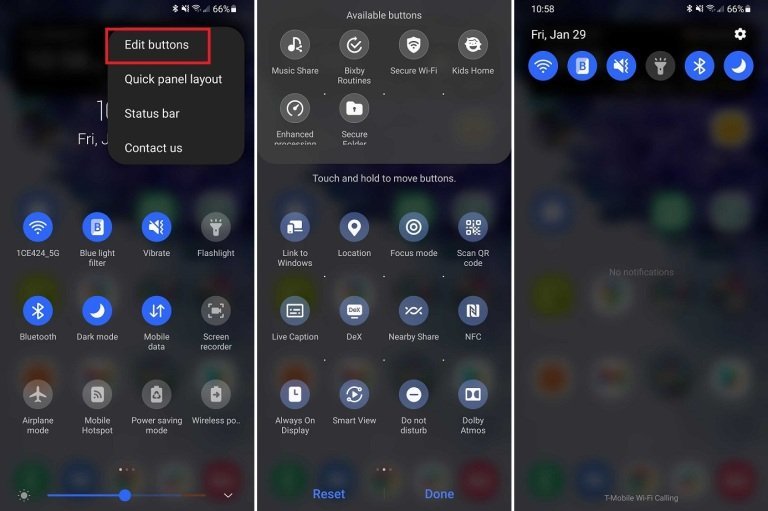
7. Customize Your Lock Screen Settings
Android smartphones have several ways to protect your device, but it can be annoying if you have to enter a password or biometric every time you use your smartphone. An easy way to fix this is to set a timer for the phone’s auto-lock feature so that the screen doesn’t lock immediately. In the lock screen settings, look for the Auto Lock or Secure Lock page and set it to lock your phone a few seconds or minutes after the screen turns off.
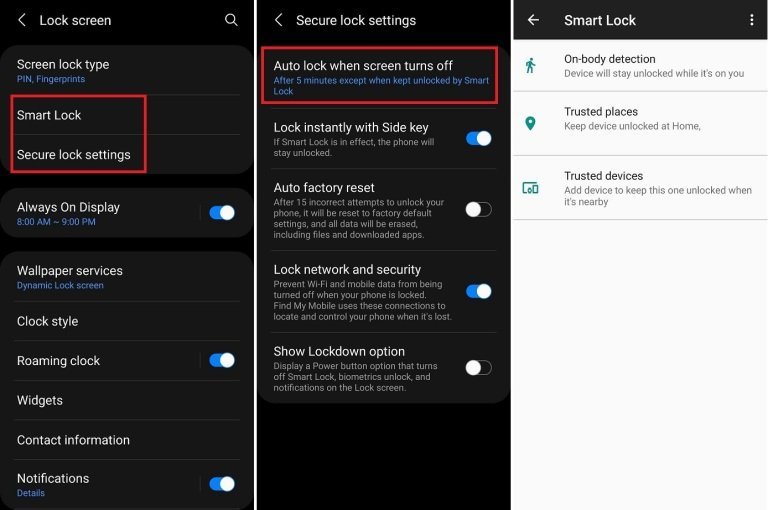
Another option is to use the Smart Lock feature to set certain parameters that keep the device unlocked. When the device is being carried, in a trusted location, or near a trusted device such as a car’s Bluetooth or laptop.
8. Use Widgets Already
Do you always swipe to select a folder to find your favorite app? You can easily do this with a widget or a live app window. These windows allow you to quickly view your most used apps without actually accessing the program. You can use them to check the weather, check your inbox, and control your music at a glance. To create a widget, touch and hold anywhere on the home screen page and tap the widget link in the pop-up menu. Swipe the list of apps that have widgets available (not all apps), tap the widget you want and drag it to the open sector. You can adjust the size and shape of the widget to fit your home screen.
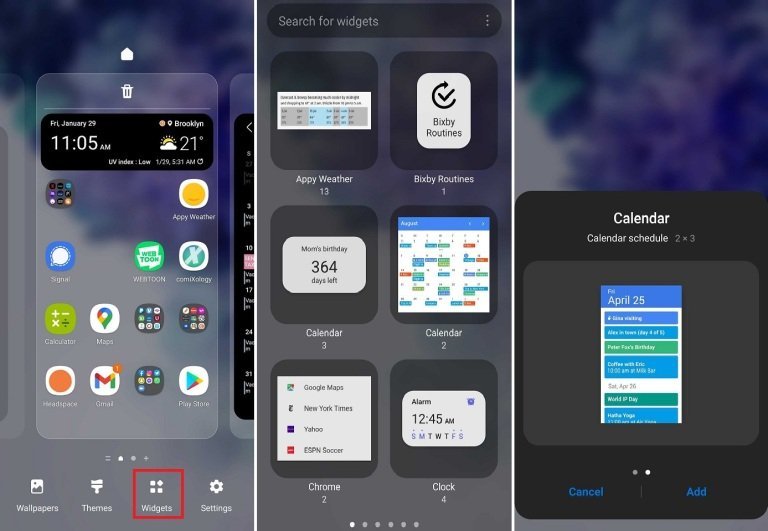
9. Keep the Battery Going
The most annoying thing your phone can do is run out of juice when you need it most. Smartphone batteries are bigger and more powerful than ever, but so are displays. In other words, you can consume energy faster than you think. There are a few things you can do to bring your phone a little more life, but the best way is to use battery saver mode.
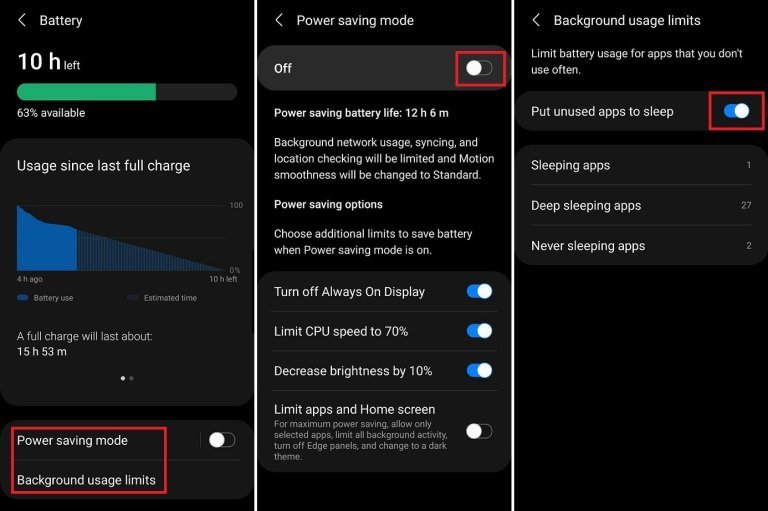
All Android devices will have this feature, though some manufacturers may have more options than others. Find this mode hidden within the battery settings, where you can turn down CPU speed, decrease brightness, and even limit app availability. Some phones may also have sAll Android devices have this feature, but some manufacturers may have more options than others. Find this mode hidden in the battery settings. You can slow down the CPU speed, reduce the brightness, and limit the availability of the app. Some phones also have some predefined power saving levels. You can also hibernate an unused app if you don’t want it to run in the background and consume valuable battery life.